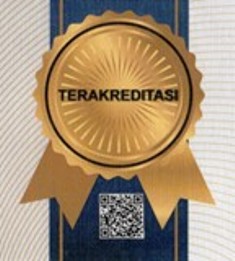Identification of Lake Tarusan as A Nature Tourism Destination in Agam District West Sumatra
DOI:
https://doi.org/10.24036/sjdgge.v5i2.390Keywords:
Lake Tarusan, nature tourism, natural tourist destination, sustainable tourism objectsAbstract
: Lake Tarusan Tourism Object always provides beautiful scenery, with cool air and a lovely lake. This condition indicates that there is a huge potential in the development of tourism to become an attraction for natural tourist destinations. Lake Tarusan should be a place frequented by tourists because of the potential for its natural beauty which is very charming. Presently, Lake Tarusan has not become a place that is often visited by domestic and foreign tourists. Lake Tarusan's problems include poorly maintained landscape conditions; various other facilities are not adequate as a tourist destination; neglect of public participation in applying the elements of Sapta Pesona as a tourist attraction. The purpose of this study is to identify the potential for natural attractions of Lake Tarusan. The research method used is descriptive analysis by conducting an inventory of data and tourism approaches. Primary data inventory was conducted through direct observation of the condition of the Lake Tarusan tourist attraction. Secondary data obtained through literature study of similar research in journals, maps and other sources. Identification of Tourism Destinations by taking a tourism approach to the 5 main elements of tourism: tourist attractions, facilities, infrastructure, transportation and hospitality. Further more data analysis used in this study descriptive qualitative to determine the natural potential and constraints that exist in Lake Tarusan as a tourist destination. The results of this analysis determine the direction of the development plan and indicates that the natural potential of Lake Tarusan is suitable as a natural tourist destination. As an attraction for tourism objects and the need to improve the quality of various supporting facilities as an effort to develop sustainable tourism objects.
Downloads
References
[2] Suwena, I.K. and Widyatmaja, I.G.N. 2017. PengetahuanDasar Ilmu Pariwisata. Penerbit Pustaka Larasan.2017. pp.18
[3] Mangunsong, dkk (2020). Identification of Rubiah Island as a Nature Tourism. Destination in Sabang, Aceh. Jurnal Eco. Env. & Cons. 27 (1): 2021; pp. (258-263).
[4] Department of Culture and Tourism, (2016). Pedoman Kelompok Sadar Wisata. Jakarta: Kementrian Pariwisata.
[5] Novalita, Rahmi. 2018. Design of a Tourism awareness education module for tourism attraction manager in Agam District, West Sumatra. African Journal Hospitality, Tourism and leasure. Volume (3)-(2018) ISSN: 2223-814X.
[6] Novalita, Rahmi. 2019. Praktikalitas Modul Pendidikan Sadar Wisata Bagi Pengelola Objek Wisata Berbasis Masyarakat Di Kabupaten Agam Sumatera Barat. Jurnal Spasial, Volume 6, Nomor 2, 20119: 62-67. https://doi.org/10.22202/js.v6i2.3749.
[7] Spillane and James, J. 1987. Ekonomi Pariwisata Indonesia, Sejarah and Prospeknya. Yogyakarta: Kanisius
[8] Nugroho, SM. 2019. Identifikasi komponen pendukungdaya tarik wisata Loang Baloq sebagai wisata pesisir di Kota Mataram. Media Bina Ilmiah. 1621.13(9): 4-5
[9] Pendit, N.S. 1994. Ilmu Pariwisata, Jakarta, PradnyaParamita.Suwena, I.K. and Widyatmaja, I.G.N. 2017. PengetahuanDasar Ilmu Pariwisata. Penerbit Pustaka Larasan.2017. pp.18.
[10] Statistik Profil Wisatawan Mancanegara Tahun 2016.Kementerian Pariwisata dan Ekonomi Kreatif (Kemenparekraf) Republik Indonesia.
.[11] Lawson and Baud-Bovy, 1997. Tourism and RecreationHandbook of Planning and Design. pp. 17. Spillane and James, J. 1987. Ekonomi Pariwisata Indonesia, Sejarah and Prospeknya. Yogyakarta: Kanisius












